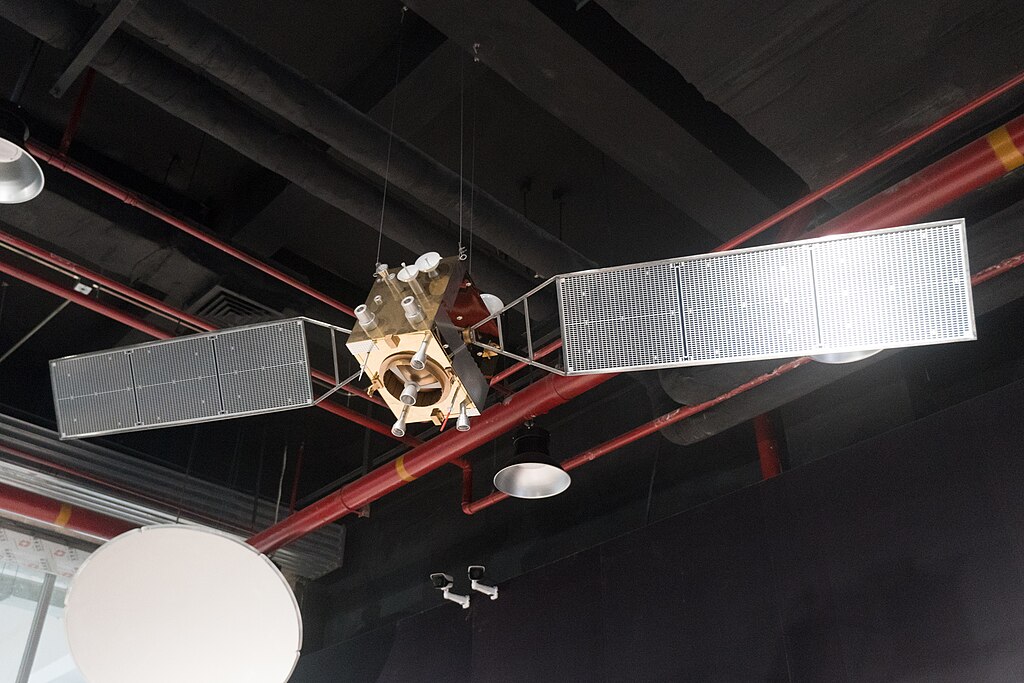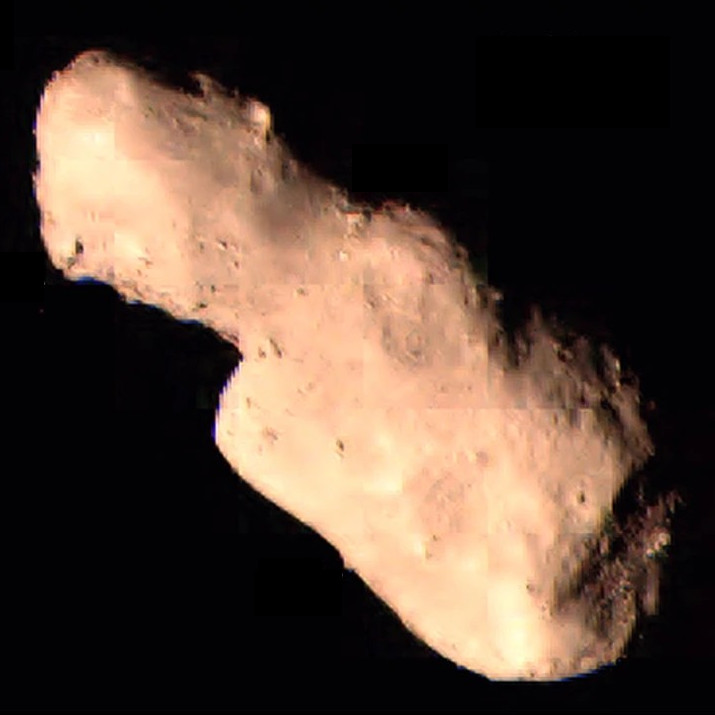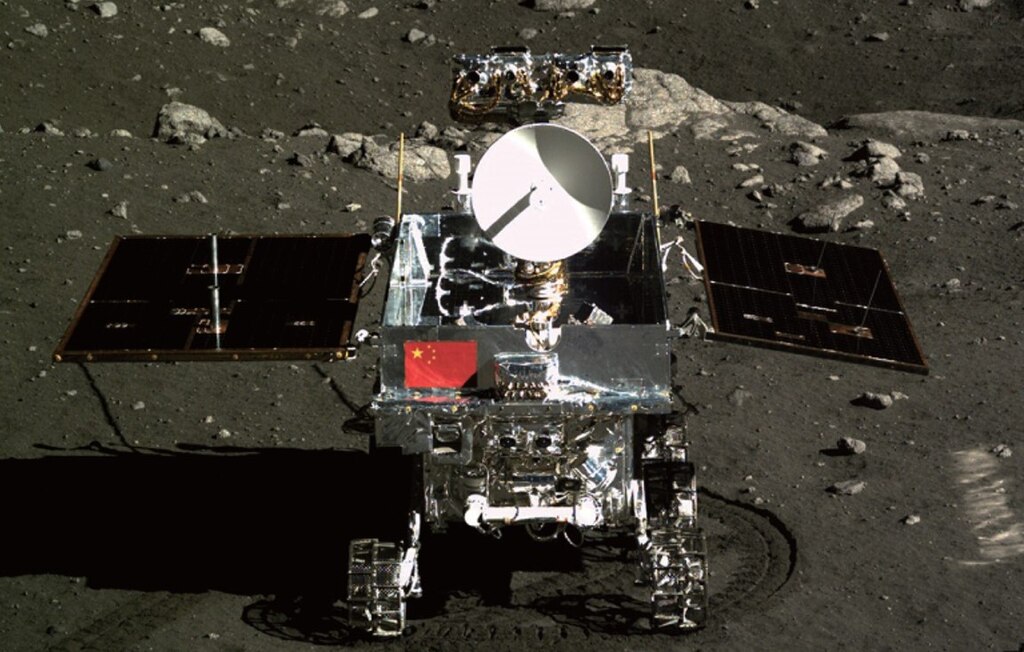
May 2, 2024
A History of the Chang'e program
Chang'e (嫦娥) is a figure in Chinese mythology known as the goddess of the moon. A woman who stole immortality and fled to the moon, and when mankind touched down onto the lunar surface flight controller Ronald Evans told Michael Collins the story of Chang'e. Collins learned of how she lived on the moon with a white rabbit and Collins knew to keep his eye out.
Many decades later, the Chinese Lunar Exploration Program (嫦娥工程) began. This programs first phase is better known as the Chang'e program. In October of 2007 Chang'e 1 launched from the Xichang satellite launch center, Chang'e 2 in 2010 sent another mission to the moon both of these initial missions were orbiters mapping the moon. Chang'e 3 launched in December of 2013 and successfully soft landed on the moon and deployed the Yutu-1 rover. These were all achievements that had been done before but were great accomplishments furthering China's lunar ambitions.

The Chang'e 1 mission was scheduled to continue for a year, but was later extended and the spacecraft operated until 1 March 2009, when it was taken out of orbit. It impacted the surface of the Moon at 08:13 UTC. Chang'e 1 was the first lunar probe to conduct passive, multi-channel, microwave remote sensing of the Moon by using a microwave radiometer.
Chang'e 1 had four major goals to further Chinese lunar ambitions. Chang'e 1 aimed to obtain three dimensional images of the landforms and geological structures of the lunar surface, analyze and map the abundance and distribution of chemical elements on the lunar surface, probe the features of the lunar soil to assess its depth and estimate the amount of certain elements presence, probe the space environment recording data on the solar wind and study the impact of solar activity. It mastered the basic technology of placing satellites in lunar orbit and formed the basis of the entire Chang'e program, this was the first venture of China's space program outside the cradle of humanity and outside of Earth orbit.
Chang'e 2 was the backup of the Chang'e 1 probe and it had been modified for its own mission. While Chang'e 1 operated in a 200-km orbit, Chang'e 2 flew at only 100 km, allowing for higher-resolution images and more precise science data. The Chang'e 2 orbiter however instead of being simply impacted into the moon after its mission ended was sent to the L2 Lagrange point to help verify technologies for China's future lunar reconnaissance satellites.
Chang'e 2 left its position at L2 on April 15, 2012, embarking on a journey towards the asteroid 4179 Toutatis. It accomplished the flyby successfully on December 13, 2012, at 16:30:09 Beijing Time (08:30:09 GMT), capturing close-up images of the asteroid. These images, boasting resolutions of up to 10 meters (33 feet) per pixel, were subsequently released online.

Chang'e 2 started as a backup for Chang'e 1, became a scientific orbiter achieving more and more precise data, verified technologies for reconnaissance satellites, and then became a deep space probe gathering more information in deep space operations. In February 2012, the Chinese government released a complete lunar map constructed from Chang'e 2's data. It was the highest-resolution map of the entire Moon yet recorded.
The 21st century's return to the Lunar Surface
After the mission of Chang'e 1 and 2 China was ready to send a fully fledged lander to the moon and with Chang'e 3 they did exactly that. The lander soft landed successfully and deployed a rover named Yutu, or Moon Rabbit/Jade Rabbit, following an online poll, after the mythological rabbit that lives on the Moon as a pet of the Moon goddess.

Chang'e 3 entered lunar orbit on December 6, 2013, followed by a successful landing on December 14, 2013. This marked the first soft landing on the Moon since the Soviet Union's Luna 24 in 1976, and made China the third nation to achieve this feat. On December 28, 2015, Chang'e 3 made a significant discovery, identifying a new type of basaltic rock rich in ilmenite, a black mineral.
The primary mission objective of Chang'e 3 was to accomplish China's inaugural soft landing and exploration with a rover on the Moon, while also showcasing and advancing key technologies for future missions. Scientifically, the goals of Chang'e 3 include surveying lunar surface topography and geology, assessing lunar material composition and resources, detecting the Sun-Earth-Moon space environment, and conducting astronomical observations from the lunar surface. One of its groundbreaking endeavors involves directly measuring the structure and depth of lunar soil to a depth of 30 meters (98 feet) and investigating the lunar crust's structure to several hundred meters deep.

The rover of Chang'e 3 was equipped with two solar panels, ensuring its energy supply during lunar days while also recharging its batteries. At night, the rover significantly reduced its power consumption and utilized several radioisotope heater units (RHUs) fueled by plutonium-238 to prevent it from getting excessively cold. These RHUs provided thermal energy exclusively, without generating electricity.
Deployed from the lander, the rover made its initial contact with the lunar surface on December 14 at 20:35 UTC. By December 17, all scientific instruments, except the spectrometers, had been activated, and both the lander and rover were reported to be operational despite the unexpectedly harsh lunar conditions. However, between December 16 and 20, the rover remained stationary, shutting down its subsystems due to extreme temperature differentials caused by direct solar radiation, reaching over 100°C (212°F) on the sunlit side while dropping below zero on the shaded side. Subsequently, both the lander and rover completed their mutual imaging tasks and initiated their respective scientific missions.
The rover's mission scope aimed to explore a designated area of 3 square kilometers (1.2 square miles) over three months, with a maximum travel distance of 10 kilometers (6.2 miles). It successfully endured its first lunar night when reactivated on January 11, 2014. However, on January 25, 2014, Chinese state media reported a "mechanical control abnormality" attributed to the challenging lunar surface conditions. Despite intermittent transmissions until September 6, 2014, the rover ceased to transmit data in March.
The bridge between Earth and the Moon
The inspiration for its name is drawn from the timeless Chinese tale "The Cowherd and the Weaver Girl," the Queqiao relay satellite stands as a pivotal component in China's Lunar Exploration Program. Launched by the China National Space Administration (CNSA) on May 20, 2018, Queqiao marks a historic milestone as the first-ever communication relay and radio astronomy satellite positioned at the Earth-Moon L2 Lagrange point. Queqiao's primary mission encompasses serving as a crucial communication bridge for the Chang'e 4 mission, facilitating vital data transmission from the unexplored far side of the Moon to Earth. Additionally, it assumes the role of a sophisticated deep space radio astronomy observatory, further enriching China's capabilities in space exploration.
The significance of Queqiao lies in overcoming the inherent challenge of establishing direct communication with Earth from the far side of the Moon, where transmissions are obstructed by the lunar mass. By orbiting at the Earth-Moon L2 Lagrangian point, Queqiao ensures an uninterrupted line of sight between the Moon's hidden surface and our home planet, enabling seamless data exchange without the hindrance of lunar interference.
While traditional circular orbits risk periodic signal disruptions, Queqiao's strategic placement at the Earth-Moon L2 point offers a stable vantage, ensuring continuous communication between lunar assets and Earth-based mission control. This innovative approach not only streamlines communication logistics but also underscores China's commitment to pushing the boundaries of space exploration. Queqiao embodies the fusion of technological innovation and historical inspiration, heralding a new era of lunar exploration and deep space communication for China.

First of its kind

In December of 2018 China launched the Chang'e 4 mission with a similar mission architecture to the Chang'e 3 lander. Once it landed on the moon it was announced that seeds sprouted in the lunar landers biological experiment bay. The spacecraft similar to Chang'e 1/2 was a backup of Chang'e 3 only to be reconfigured for its new mission. Chang'e 4 however landed on the farside of the moon and utilized the lunar relay to explore this new region of the moon.
As apart of Chang'e 4 there were two microsatellites named Longjiang 1 and 2 that flew onboard Queqiao-1. Longjiang-1 failed but 2 succeeded in reaching their lunar orbits until being deliberately directed to crash into the moon. These satellites were meant to observe the sky at very low frequencies, Due to the Earth's ionosphere no observations in this range have been done in Earth orbit. This gave the satellites a unique opportunity to break new ground. The Chang'e 4 lander performed several radio astronomy experiments and broke the lunar longevity record of 322 earth days, previously held by the Lunokhod 1 rover. It was also equipped with a Yutu-2 rover that is nearly identical to the Yutu rover on Chang'e 3.
Sample Retrieval
Chang'e 5 was the fifth lunar exploration mission of the program. It launched from the Wenchang Spacecraft Launch Site and then landed in December of 2020. Chang'e 5 was the first lunar sample return mission since Luna 24 in 1976. This mission made China the third country to return samples from the moon. The mission architecture consisted of a lander, ascender, orbiter, and returner. The four components were launched together and flew to the moon as a combined unit. The Lander/Ascender then separated and after sample collection they docked in lunar orbit marking the first autonomous docking in lunar orbit. The Orbiter/Returner spacecraft returned to Earth and carried samples back to the moon.

Chang'e 5 carried four scientific instruments onboard, comprising a Landing Camera, a Panoramic Camera, a Lunar Mineralogical Spectrometer, and a Lunar Regolith Penetrating Radar. It utilized two distinct sampling techniques: drilling for subsurface samples and scooping for surface samples. The scooping mechanism, developed by The Hong Kong Polytechnic University, featured Sampler A, Sampler B, Near-field Cameras, and a Sealing and Packaging System.
The Lander/Ascender touched down on the lunar surface on December 1, 2020, at 15:11 UTC. Situated at coordinates 43.1°N latitude and 51.8°W longitude, the Chang'e 5 landing site lies within the Northern Oceanus Procellarum, near the prominent volcanic complex known as Mons Rümker. This location, designated as 'Eratosthenian Mare' by the USGS, harbors the Chang'e 5 landing site, named Statio Tianchuan. It resides within the Procellarum KREEP Terrain, characterized by elevated heat-producing elements, a thin crust, and prolonged volcanic activity.
Remarkably, this area boasts some of the Moon's youngest mare basalts, estimated to be approximately 1.21 billion years old. Notably absent from previous sampling efforts by the American Apollo program and the Soviet Luna program, this region exhibits heightened levels of titanium, thorium, and olivine abundances, offering a unique opportunity for scientific exploration.

Queqiao-2
Queqiao-2, the successor to the original Queqiao relay satellite, was launched independently from the Chang'e 7 probe, following a project revision by the Center for Lunar Exploration and Space Projects at CNSA. Unlike its predecessor, Queqiao-2 is designed to orbit the Moon itself in a stable frozen elliptic orbit, ensuring consistent communication capability without the need for frequent fuel consumption for orbit correction.
Scheduled for deployment in support of the Chang'e 6 sample return mission, Queqiao-2 is based on the CAST 2000 bus from DFH Satellite, equipped with advanced features such as precise alignment capability and improved fuel efficiency. Its primary function is to serve as a relay satellite and radio observatory, facilitating communication between lunar missions and Earth.
With a payload capacity of 488 kg, Queqiao-2 carries three scientific instruments:
- Grid-based Energetic Neutral Atom imager (GENA) for observing the terrestrial magnetosphere.
- Extreme Ultraviolet Camera (EUC) for capturing lunar surface images.
- Lunar Orbit VLBI Experiment, utilizing a 4.2 m antenna as a radio telescope to study radio sources outside the Milky Way and track spacecraft positions.
Powered by rotatable solar cell wings and equipped with accumulators for blackout periods, Queqiao-2 is expected to operate efficiently for at least 8 to 10 years, contributing significantly to lunar exploration and scientific research. This relay sat lays the foundations for the future larger navigation and communication network that Chian is planning on establishing. This will be primarily meant for the Chang'e 7 and 8 missions which is set for the south pole and setting the basis for the International Lunar Research Station.
Queqiao-2 also carries two smaller communication satellites, Tiandu 1 and 2 which are meant to verify lunar communication and navigation constellation based on the Queqiao technology. After launch, the two satellites underwent lunar orbit insertion on 24 March 2024 at 17:43. This satellites will perform various maneuvers and testing to verify technologies for the wider more interconnected network that China is planning.
Concluding Thoughts
This is merely the beginning of China's lunar exploration efforts but it is an amazing story of advancement. Chang'e 6 plans to be launched in May of 2024 and will use a highly similar architecture to Chang'e 5. Chang'e 7 will explore the south pole and Chang'e 8 will verify ISRU technologies for ILRS. After this China will transition into their crewed exploration phase. Just as that elegant young woman fled to the moon and just as Collins kept his eyes out for Yutu China is going to the moon to stay.
As we reunite with the moon we help extend humanity in the same way Chang'e was able to make her conquest of immortality these missions will forever live in infamy as massive achievements for China.



